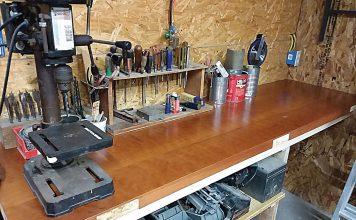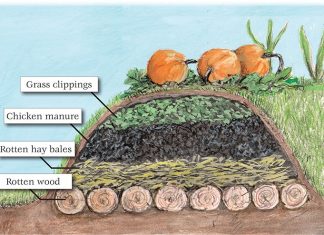 |
|
| Issue #102 • November/December, 2006 |
Making bread at home is a long process—kneading the dough, waiting while it rises, shaping it into a loaf, and then waiting while it rises again. But in the end, the golden, crusty, voluminous loaf of bread is worth all the trouble. Too often, however, after all that time, the results are disappointing—the loaf doesn’t rise well or the crust is dull and pale. The oven can be a key contributor to these unsatisfactory results.
How can the home baker achieve great bread without a professional bread oven? Understanding how dough acts in the oven and what bakery ovens have that home ovens lack leads to simple modifications the home baker can make to improve his or her oven greatly.
Dough rises, or expands, because of gas produced in the dough by fermentation reactions. This expansion occurs throughout the bread-making process, with a final burst of expansion occurring in the oven. What causes this final expansion? The heat of the oven speeds up the dough’s chemical reactions, increasing gas production. In addition, carbon dioxide molecules dissolved in the dough turn into gas molecules at higher temperatures, and gas bubbles in the dough expand when heated. These effects of the heat all increase the size of the dough as it bakes into bread. This final expansion occurs in the first 10 minutes the dough is in the oven. To maximize these effects, it is important to have a hot oven the moment the dough enters.
A good bread oven does not lose heat when the door is opened. Traditional deck ovens consist of giant slabs of concrete heated up to the oven temperature. These slabs, once heated, are able to radiate enough heat to maintain the oven’s temperature even when the door is opened. Other ovens have thick brick walls to maintain the heat or are designed to reheat very quickly.
Unfortunately, home ovens lose most of their heat when the door is opened. Once the cold dough enters, the oven must regain the lost heat. By the time this happens, it is too late. The yeast cells are dying, gas-producing reactions are slowing down, and the crust is forming on the loaf, preventing expansion.
|
How can a home oven be kept hot, even when the door must be opened? One simple trick is to preheat the oven too high. For example, a basic loaf made with flour, water, yeast, and salt bakes at a temperature of 450° F. Preheat the oven to 500°. Put the dough in as quickly as possible, shut the door, and turn the temperature down to 450°. The oven temperature will have dropped, but it will be closer to 450° than it would have been without the extra preheating.
Another solution is to bake bread on a pizza stone. The stone must be preheated with the oven. Introducing a cold stone with the dough would exacerbate the problem of lost oven heat. When the dough is placed on the stone and the oven door is shut, the stone radiates heat, reheating the small oven and providing heat to the dough. Extra stones in the oven can increase this effect. Some bakers place a second pizza stone on the rack over the baking rack so that heat radiates down from above the dough. If you plan to line your whole oven with stones, make sure to leave space at the sides so that heat can circulate.
Cheaper alternatives exist as well: Flat stones from a lumber or garden store can be used in place of a pizza stone. In addition, any stone or brick can be used to help hold heat in the oven, whether or not the dough sits on it. Just preheat the oven long enough to ensure that the stones are fully heated.
A second benefit of professional bakery ovens is their ability to steam dough once it enters the oven. The steam condenses on the relatively cool dough, forming a layer of water. This water slows crust formation, allowing the dough to expand for a longer period of time. Sugars in the dough dissolve into the water layer, increasing their concentration at the surface and eventually contributing to the browning of the loaf. More steam generally results in a thicker, browner, shinier crust.
The obvious, but not very effective, method of producing steam in a home oven is to use a spray bottle, spraying water in the open oven door. This small amount of water does little. Instead, the spray can be applied directly to the dough just before it enters the oven. It may be more effective to use a brush or hands—just wet them and wipe them over the entire surface of the dough, producing a good coating of water.
Some home bakers have devised effective ways to steam the oven instead of the loaf. An oven-safe cup of water in the oven 15 minutes before the dough enters will produce a steamy oven. Much of this steam may be lost when the oven door is open, but the water will continue to steam the oven after the door closes. Remove any remaining water after the dough has been baking for 15 minutes so that the oven will dry out and the crust will form.
A more dramatic oven-steaming method is to preheat a cast iron pan with the oven, on a rack below the baking rack. After the dough enters the oven, carefully pour a cup of water onto the hot pan and quickly close the oven door. The water will evaporate rapidly into a cloud of steam.
Proper use of heat and steam can do wonders when baking a loaf of bread. With a few simple tricks, your oven will be baking like a bakery oven in no time.















